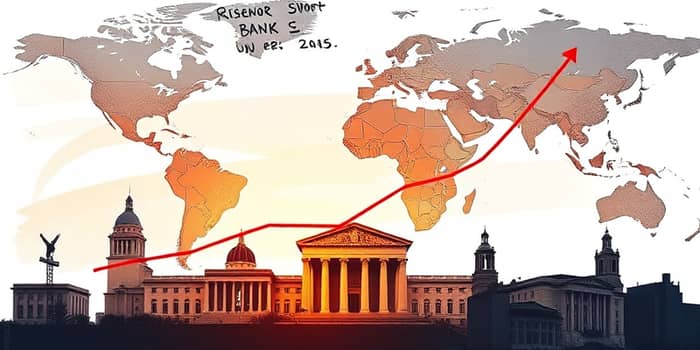
In recent months, the global bond market has witnessed a pronounced shift: what was once a steep, upward-sloping yield curve has become conspicuously flat. As central banks around the world raise policy rates to combat inflation, this flattening yield curve signals broader economic inflection. Investors, policymakers, and consumers alike are keenly observing the narrowing gap between short- and long-term interest rates to gauge future growth prospects.
Against this backdrop, understanding the forces driving these movements and their implications is crucial for anyone engaging in financial planning or market analysis.
The yield curve is a graphical representation of bond yields by maturity. A normal yield curve slopes upward, reflecting higher compensation for longer-term risk. A flat curve arises when yields across maturities converge, and an inverted curve occurs when short-term yields surpass long-term yields—a historical harbinger of recession.
These shapes convey distinct market expectations:
Central banks wield significant influence over short-term interest rates through policy rates like the U.S. federal funds rate or the European Central Bank’s main refinancing rate. When inflation runs above target—often beyond 2 percent—policymakers implement aggressive rate-hiking cycles to temper demand and anchor price stability.
Quantitative easing, or large-scale asset purchases, once depressed yields across all maturities. Now, as central banks reverse these programs, they drain liquidity and push short-term yields upward. Long-term yields, on the other hand, reflect market expectations of future growth and inflation and may be slower to rise or even decline if investors foresee a slowdown.
As of early March 2025, the U.S. Treasury yield curve exhibits marked flatness. Key benchmarks include:
This 0.26 percentage-point spread stands well below the historical average of around 1.5 points. After being inverted for much of 2022–2024, the curve has only partially recovered, remaining at levels economists view as worrisome.
Globally, major central banks—such as the Bank of England and the Bank of Japan—are enacting similar tightening measures, creating parallel flattening trends across markets.
A flat yield curve often precedes turning points in the economic cycle. While not as widely recognized as an inversion, flatness suggests that investors are uncertain about long-term growth or anticipate rate cuts ahead.
For the banking sector, profitability hinges on earning more from long-term loans than paying for short-term deposits. A narrow yield spread compresses net interest margins, which can lead banks to tighten lending standards and reduce credit availability.
While the U.S. curve draws the most attention, other economies exhibit similar dynamics. In Europe, bond yields across maturities have converged as the European Central Bank battles persistent inflation. In emerging markets, weaker currencies and higher risk premiums amplify curve distortions.
This synchronized flattening underscores the interlinked nature of global finance. Investors reallocating portfolios toward perceived safety in longer-term sovereign debt further intensify the trend.
Market strategists remain divided on the next phase of the yield curve. Some forecast a gradual steepening if central banks pivot toward rate cuts by late 2025, driven by concerns over weakening growth. Others warn that if inflation proves stubborn, prolonged policy tightness could persist, keeping the curve flat or inverted.
Policymakers face a delicate path: easing too soon risks reigniting inflation, while overtightening may tip economies into recession.
The flattening of the yield curve as central banks tighten policy offers a cautionary signal. It reflects deep uncertainty about future growth, inflation, and the global economic trajectory. For investors, understanding these shifts is essential for portfolio positioning, risk management, and strategic planning.
By closely monitoring yield spreads, economic indicators, and central bank communications, market participants can better anticipate potential inflection points. In an environment of heightened monetary policy risks, staying informed remains the most powerful tool.
References













